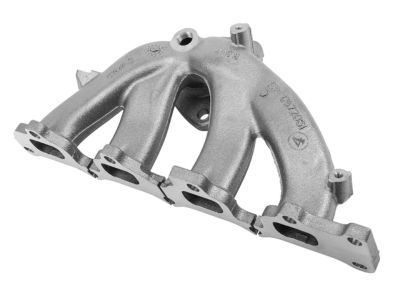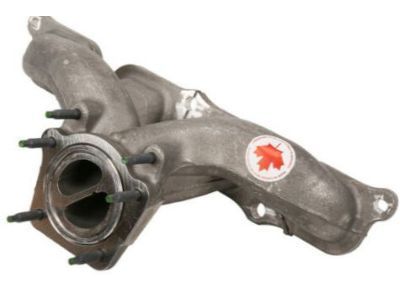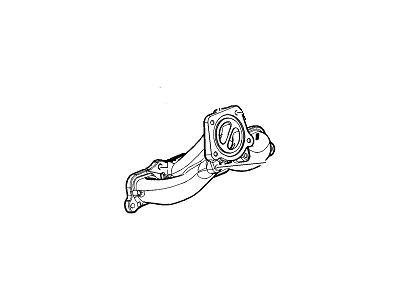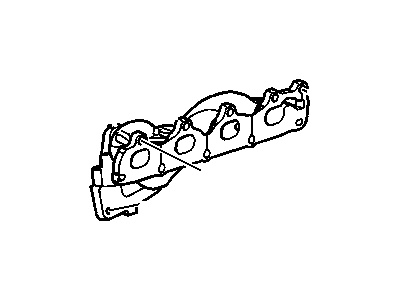
My Garage
My Account
Cart
Genuine GMC Terrain Exhaust Manifold
Engine Exhaust Manifold- Select Vehicle by Model
- Select Vehicle by VIN
Select Vehicle by Model
orMake
Model
Year
Select Vehicle by VIN
For the most accurate results, select vehicle by your VIN (Vehicle Identification Number).
4 Exhaust Manifolds found
GMC Terrain Exhaust Manifold
Part Number: 12672961$269.72 MSRP: $465.28You Save: $195.56 (43%)Ships in 1-3 Business DaysGMC Terrain Exhaust Manifold Assembly
Part Number: 12670220$309.40 MSRP: $529.04You Save: $219.64 (42%)Ships in 1-2 Business DaysGMC Terrain Exhaust Manifold Assembly
Part Number: 55490673$123.90 MSRP: $195.82You Save: $71.92 (37%)
GMC Terrain Exhaust Manifold
Exhaust Manifold in GMC Terrain helps control temperature of these gases before they are channeled to exhaust systems within the automobiles, thus defining efficiency of the engine as well as controlling emissions. Located towards the top of the exhaust system the manifold gathers exhaust from multiple cylinders with layouts typically depeding on the configuration of the engine. Mostly made of cast iron or stainless steel, the GMC Terrain's exhaust manifold has upgraded headers that improve gas flow and, therefore, the engine. In the previous years of GMC Terrain, the exhaust manifold styles are standard manifolds and performance headers. The major difference here is that headers actually decrease flow resistance and increase velocity of the exhaust gases for a potentially better performance. It is necessary to ensure that the exhaust manifold is well maintained, since it suffers from wear and tear that may cause performance problems and also lead to health hazards because of exhaust leaks within the vehicle.
Each OEM GMC Terrain Exhaust Manifold we offer is competitively priced and comes with the assurance of the manufacturer's warranty for the part. Furthermore, we guarantee the speedy delivery of your orders right to your doorstep. Our hassle-free return policy is also in place for your peace of mind.
GMC Terrain Exhaust Manifold Parts Questions & Experts Answers
- Q: How to remove the exhaust manifold in 3.0L and 3.6L V6 engine on GMC Terrain?A:To get rid of the exhaust manifold in the 3.0L engine, and 2013 and newer 3.6L engines, unbend the cable on the negative terminal of the battery and then safely lift the car on jack stands. Now make use of penetrating oil on the studs and nuts holding the catalytic converters to the exhaust manifolds, then remove the bolts holding the converters and disconnect them. For left manifold, unscrew oil dipstick tube; for right manifold, undo air filter inlet and remove brake fluid level sensor connector. Thirdly, we need to remove both torque strut mounts and brackets, of course, and the oxygen sensor electrical connectors, as well as the wiring harness clip. Unbolt the exhaust manifold heat shield and the heat shield itself, then unbolt the exhaust manifold bolts, though the lower bolts to the right manifold are installed from under the vehicle. Remove the exhaust manifolds and overhaul the gaskets as it is not necessary to re-use them. Inspection of several points should be done before engine installation, these include; the cracks on the manifold, the condition of the bolt threads for the manifold and the condition of the manifold and cyilnder head mating surfaces. Depressurize the cylinders and scrape the block and head surfaces with a gasket scraper applying special care not to scratch the aluminum materials. If any manifold bolts are broken should take the manifold to cylinder head reconditioning shop to have it machined for good sealing. Position the manifold over the cylinder head and fit the nuts of the mounting bolts loosely and then, using a torque wrench, tighten the bolts from the center outwards. If so, one has to form the protruding end of the exhaust manifold gasket on the cylinder head. Coat the threads of the outer heat shield bolts with anti-seize compound, then install and torque to the recommended value, then perform the procedure in the reverse of the removal process specified above. Lastly, turn on the engine then it is time to check for exhaust leaks.



















